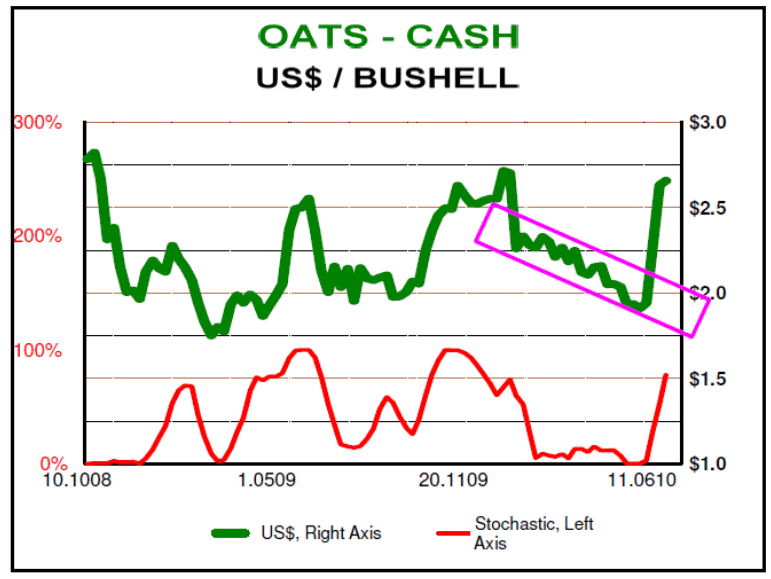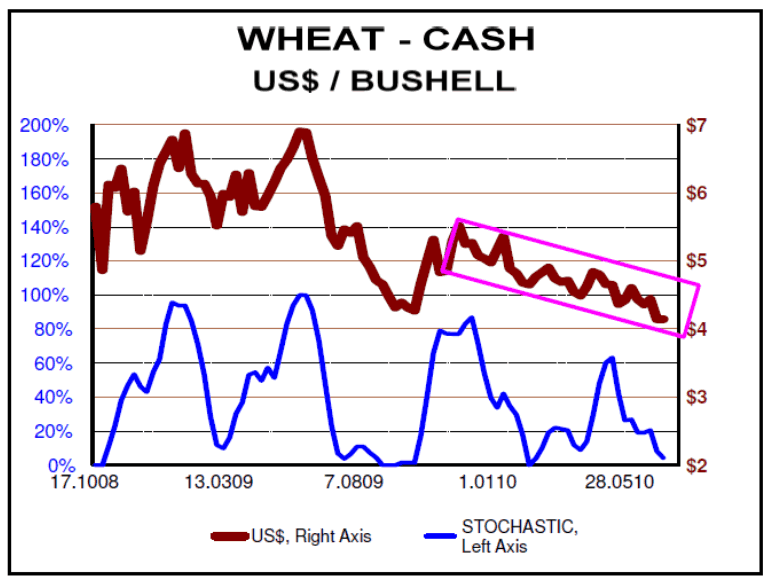Crop Cycles and Agri-Food's Price Inelasticity
Commodities / Agricultural Commodities Jun 29, 2010 - 09:56 AM GMTBy: Ned_W_Schmidt
 Investment world has many saying that have come down from those that went before us. They learned those lessons the hard way, by paying for them. We have been told, for example, that bears get rich and bulls get rich, while pigs are made into bacon. Many simply ignore the wisdom of the ages. In doing so, they must learn from their own mistakes rather than learning from those mistakes paid for with someone else's money.
Investment world has many saying that have come down from those that went before us. They learned those lessons the hard way, by paying for them. We have been told, for example, that bears get rich and bulls get rich, while pigs are made into bacon. Many simply ignore the wisdom of the ages. In doing so, they must learn from their own mistakes rather than learning from those mistakes paid for with someone else's money.
In today's world of price inelasticity in Agri-Foods, bacon can me made in matter of days. The world's food reserves are so fragile that no room exists for a misstep in production. Agri-Foods are not produced in a factory. Agri-Foods are grown in the ground, generally one time a year. Miss a crop cycle, and the world must wait a full year for the next. With the world's Agri-Food situation tighter than it has been since the 19th century, this lesson will be relearned on a regular basis.

In this week's first chart, above, of oats we find an example where traders were recently made into bacon. Oats do not on the surface seem a market where a short squeeze would develop. It did, and as the chart shows it was a beautiful one. Your Starbucks oatmeal may just get a little more expensive this coming year.
In that chart has been placed a trading box to highlight the recent action in oats. Traders work off of moving averages and short-term highs and lows, causing such patterns to develop. As can be observed in that trading box, traders had been pushing the price of oats lower for months. Then, despite their wonderful trading systems, Canadian weather failed to cooperate. The price of oats exploded upwards, converting piggish shorts into bacon. By themselves, Canadian oats are not critical to the world's diet. However, oats are simply one part, a small but integral one, of the global Agri-Food mosaic.
Why the short squeeze? Per Rod Nickel at Reuters writing in "Canada's oat crop seen lowest in decades on wet weather," 14 June 2010,
"Wet weather could slash oat production in Western Canada, the second-biggest oat-growing region in the world, by more than 700,000 tonnes from earlier estimates and boost oat prices for the foreseeable future, an analyst and a commercial trader said on Monday."
"A drop that large represents 22 percent of the Canadian Agriculture Department's May 5 production estimate of 3.2 million tonnes, cutting the harvest to levels not seen since at least the mid-1980s."
In Canada, the oat "factory" is closed till next year. In the week following this report the deadlines passed for crop insurance. Farmers faced the choice of either risking a late planting or collecting on crop insurance. A significant portion of the Canadian oat, barley and wheat crop has been lost due to weather and insurance dates. That lost production will not be replaced till next year.
Aside from understanding that grains are not produced in a factory, another important lesson needs to be learned. Agri-Food is a lot like a Rubik's Cube. A twist or a push on one part of the cube affects other sides of the cube. Increase or decrease in the supply of one grain crop influences the prices of all other grains. If oats are less available, after increasing the price of available oats, the world will turn to other grains. Those horses and Starbucks groupies have to eat something.

Our second chart, above, of wheat may be a market where bacon could soon be made. As the trading box indicates, traders are determined to push wheat prices lower. They are convinced that the absolute size of wheat reserves dictates only one direction for wheat prices, lower. As we learned in one of our previous discussions, the absolute level of wheat reserves is a meaningless number. The meaningful number is the level of reserves relative to consumption. We learned also in that discussion that outside of China, the world is really relative short of wheat.
We also learn from the Frayne Olsen at the North Dakota State University Extension Service, 25 June 2010, that the Canadian situation could have significant meaning for the U.S. and world consumers,
"An excessively wet spring is creating significant problems for the Canadian Prairie Provinces of Alberta, Saskatchewan and Manitoba. The immediate issue is how many crop acres have been planted versus how many acres will go unplanted. The Canadian Wheat Board estimates that between 8.25 million and 12.5 million acres of Prairie cropland will not be planted this year. Most of the unplanted acres are in the province of Saskatchewan. In 2009, this region planted approximately 60.9 million crop acres."
"This is important to North Dakota farmers because these three provinces account for approximately 88 percent of Canada's oat acres, 94 percent of the barley, 97 percent of the flax, 98 percent of the spring wheat, 99 percent of the canola and all of the Canadian durum, dry pea and lentil acres."
Those of you that enjoy oatmeal on cold mornings this coming winter may find your breakfast a little more expensive. Those of you that you that enjoy your pasta and bread may find in the coming year that bacon was made in the world wheat market, and those favorites cost a little more. In today's world the amount of rain falling in Canada is much like the butterfly flapping its wings in Africa. That actions influences the prices of Agri-Food all around the world, not just locally.
Weather is a transitory influence of Agri-Food prices. Demand from China for Agri-Food today, and India tomorrow, is not. If China needs oats, and we do not know if Chinese like oatmeal, they will simply buy them in world markets. bidding up the price as they do. Long a net importer of soybeans, China is now a net importer of corn and meat. What we do know is that China's wallet is far more able to bid for Agri-Food in the world's market than most. As you try to feed your family in the decade ahead your Gold holdings may come in handy as the price of Agri-Foods continues a secular rise. For more on Agri-Food turn to this link; www.agrifoodvalueview.com/RecentIssue.html
By Ned W Schmidt CFA, CEBS
AGRI-FOOD THOUGHTS is from Ned W. Schmidt,CFA,CEBS, publisher of The Agri-Food Value View, a monthly exploration of the Agri-Food grand cycle being created by China, India, and Eco-energy. To contract Ned or to learn more, use this link: www.agrifoodvalueview.com.
Copyright © 2010 Ned W. Schmidt - All Rights Reserved
Ned W Schmidt Archive |
© 2005-2022 http://www.MarketOracle.co.uk - The Market Oracle is a FREE Daily Financial Markets Analysis & Forecasting online publication.



